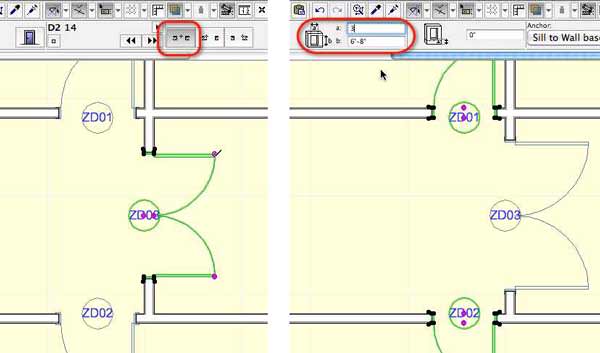ArchiCAD Training | Record Your Design Intent | The Fourth Key
 What’s the fourth key – in general terms? or in detail? (;->)
What’s the fourth key – in general terms? or in detail? (;->)
We’re at the half-way point in my 7 Keys to Best Practices mini-course! If you missed any of the earlier installments, you can find them here on this site in the section on free ARCHICAD TRAINING.
I’m enjoying your feedback – it means a lot to me to hear from so many people that they appreciate the training materials. One person sent me a note: “If someone like you didn’t exist, you’d have to be invented.” I’m glad to be filling a need, helping people to understand ArchiCAD better.
- Please email me – I love to read your comments and respond to your questions.
The next step along our journey together is to understand how to most effectively work from early, general concepts to specific design details.
When you use the Best Practices methods I’m about to share with you, as you develop your design you will record your design intent in a way that will save you a lot of time and effort later.
WORK FROM THE GENERAL TO THE SPECIFIC
As you go through the design process on any project, you start with general concepts and then gradually get more specific as you make decisions with your client on exact wall types, the actual geometry, the distances, the clearances, the materials, all of these things.
When you draw your initial elements, whether you start with a massing model, a bubble diagram, or laying out a floor plan, place these elements with consciousness of their reference line or their insertion point.
For example, the wall reference line serves to anchor your design intent. This is true even when you’re just placing two parallel lines with an empty fill before you know what wall assembly you’re going to use.
When you later change the walls to a specific component structure, the reference line will stay fixed in position, while the wall thickness changes.
In new construction, place the reference line on the outside surface or face of framing; for remodels, it might be better to have the reference line on the inside surface that you measured.
HOW YOU PLACE THINGS MAKES A BIG DIFFERENCE
When you place a door or window, use center or corner insertion to indicate what is important to your design.
For example, if the window is to be centered in the room, or a door centered in a corridor, use center insertion – then if the size is changed, it will remain equidistant from the two walls.
If a door is to be placed a specific distance such as 4″ or 10 cm from a wall intersection, use corner insertion; then if the door is made bigger or smaller it will be remain the proper distance from the corner.
- Left: Door 3 is inserted centered in corridor with a centerpoint anchor, while doors 1 and 2 are placed with the corner method a few inches from the wall intersections.
- Right: Door 3 was made larger, yet remains centered; doors 1 and 2 are being resized in the Info palette and will retain their distance to the corner framing.
WHAT’S YOUR INTENT?
Your design intent carries through if you use these anchoring methods consistently.
This principle applies to other elements as well. For example, with column grids and individual columns, insert them consciously by center or a specific corner. If they are resized, their anchor point will stay in position while the dimensions of the element will update.
You can even use this idea with materials for the model. Instead of setting the walls to a specific color or surface material, then later having to select them and change them to another color, why not designate their material generically at first?
You can set most or all of the walls to a general material such as “Exterior Wall Default” or “Interior Wall Default”. Other walls or surfaces may be designated “Exterior Wall Accent”, etc. Then when you’re ready to study the materials, simply change the definition of “Exterior Wall Default” or the accent color, and all the walls in the model that reference that material will instantly update.
You can set up these general materials in any system you like – perhaps Paint 1, Paint 2, Paint 3, etc. The point is that if you record your basic design intent (e.g. certain walls are all the same color, while other walls are a different color), you’ll be able to get more specific later, or try out variations, with a minimum of effort.
I hope you found this lesson useful. Please send me an email or post a comment below telling me how you are applying these ideas.
Best regards,
Eric
P.S. The next key to Best Practices will teach you how to work with ArchiCAD’s structure so that you’re “going with the flow” rather than fighting the program. It will be ready in a few days.

